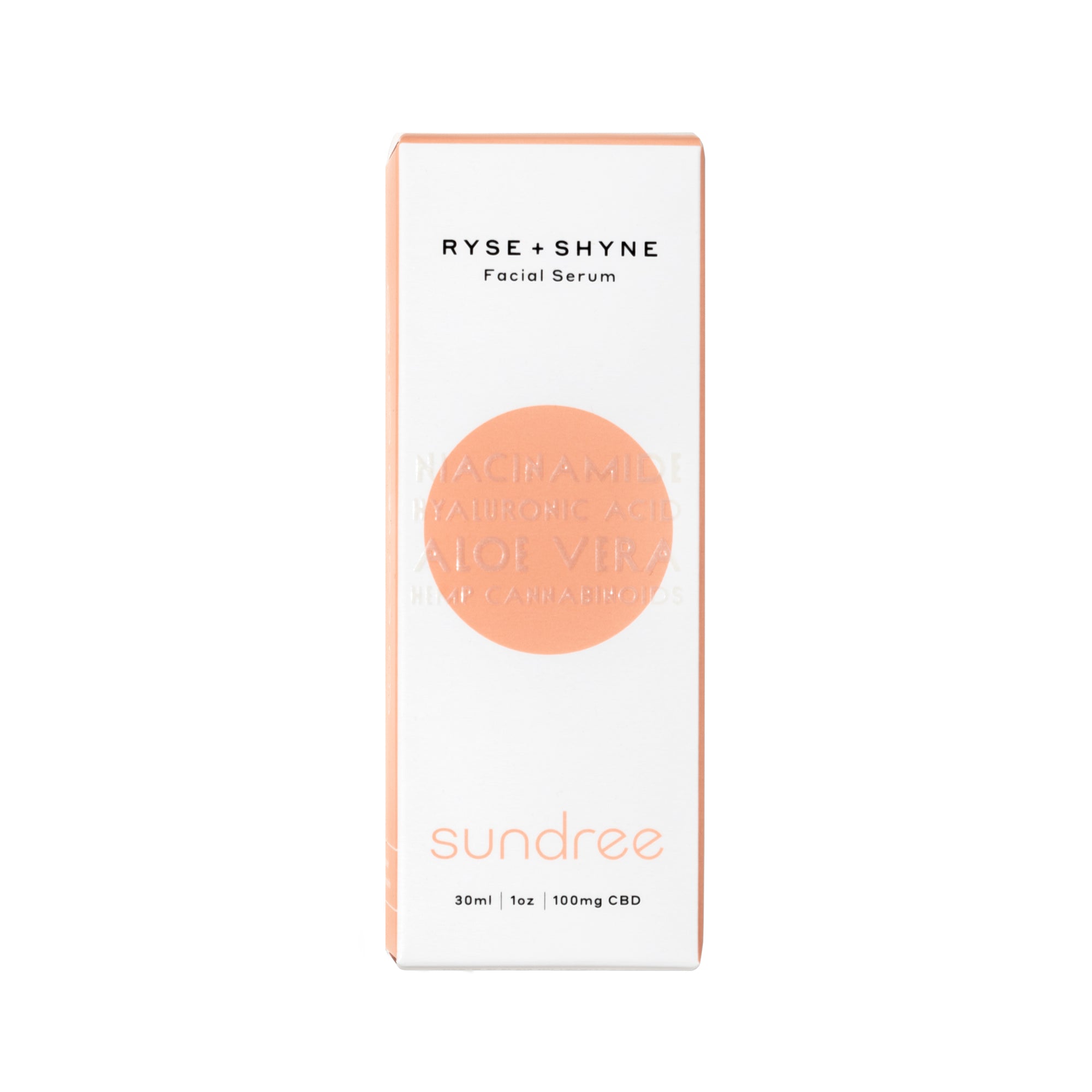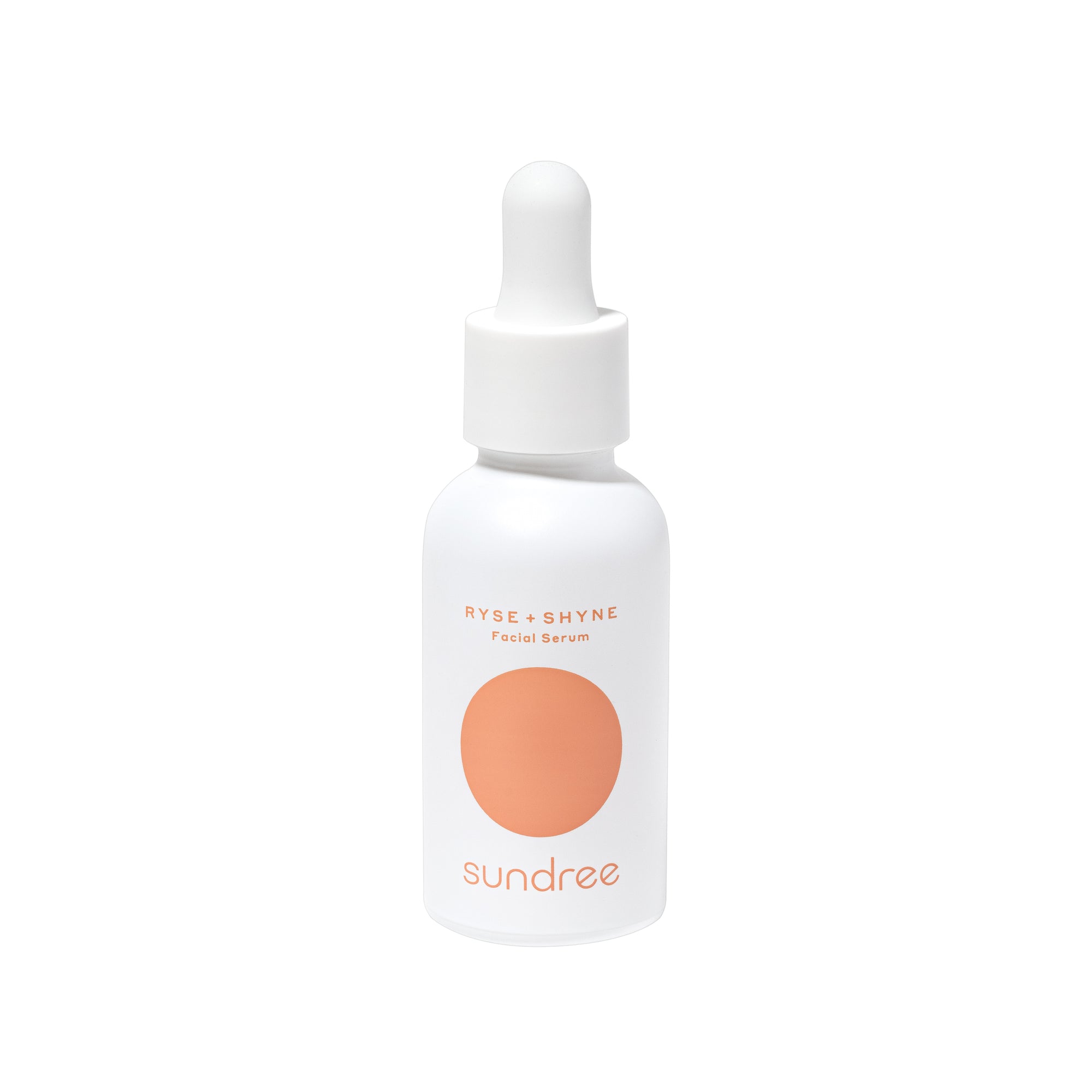If your skin concerns mainly include rough, patchy, itchy, uneven, dull, and sometimes inflamed skin, you are not alone. Dry and dehydrated skin is probably one of the most common skin issues people face with different skin types. However, many of us confuse dehydration with dryness and tend to use both words to characterize the same skin concern. In reality, dryness and dehydration are two different skin problems with various symptoms, causes, and treatment options to choose from. If you are not familiar with what differentiates dry skin from dehydrated skin, the causes of dry and dehydrated skin, and the effective treatments of both using appropriate skincare ingredients.¹ We are here to assist you in getting to the bottom of it all. So, let's get to it!
Difference between Dry and Dehydrated Skin
Dry skin is a skin type involving fewer oil-producing sebaceous glands on the face and body. It’s categorized by the lack of sebum or oil due to the reduced activity of sebaceous glands. In the case of dry skin, your skin needs to retain more moisture to relieve itching, scaling, and redness and strengthen the lipid barrier, which protects it from all sorts of external elements. On the other hand, dehydrated skin is a condition described by the absence of water instead of oil in the skin. This means that even if your skin type is oily, combination, or normal, it is still prone to getting dehydrated. So, it’s imperative to look for the symptoms of dehydrated skin and consider its negative effects on the skin, even if you have an oily complexion.
What Causes Dry Skin?
- The Natural Process of Aging: Although we are born with one specific skin type, increasing age can reduce the amount of oil secreted by the lipid glands in the skin and speed up the loss of moisture from the skin, leading to skin cell deterioration and a compromised lipid barrier. This results in our skin type changing to dry.
- Hormonal Imbalance: In some cases, underlying health conditions can also cause the skin to look and feel dry. Hypothyroidism is one of the causes that can be the issue behind dryness of the skin.
- Environmental Factors: Our skin endures several harmful external agents (like UV rays and free radicals) that come in contact with it on an everyday basis. These factors can lay the ground for cell damage, accelerate the process of aging, weaken the lipid barrier, and strip the skin of its oil and water.
- Extreme Weather: Drying winds during the winter and the scorching heat of summer can profoundly impact our skin. It’s pretty common to experience dryness and dehydration during extreme temperatures.
- Hot Shower and Hard Water: Hot showers and baths can also draw moisture from the skin, leaving it dry and itchy. It’s recommended only to use warm water when showering. Similarly, limestone in hard water can cause the skin to dry out as well.
- Wrong Skincare Products or Routine: Another important factor behind dry skin is using the wrong skincare products. Products filled with chemicals and drying ingredients can lead to aggravated, dry, and inflamed skin.
Symptoms of Dry Skin
Dry skin tends to be more uncomfortable, inflamed, red, rough, and flaky than dehydrated skin. Dry skin can get worse near your eyebrows and around the corners of your mouth and nose. Your skin may even start flaking off upon rubbing it. You may also experience certain skin conditions, such as eczema, psoriasis, and dermatitis if your skin becomes extremely dry.
Treatments for Dry Skin
It’s needless to say that hydration and moisturization are also two varying phenomena, just like dehydration and dryness. To fulfill the needs of dry skin, keep your skin sufficiently and deeply moisturized. If you’re wondering how to fix dry skin, find a formula that contains soothing and moisturizing ingredients aimed at calming and treating dry and irritated skin. In addition, if you are struggling with both dry and dehydrated skin, choose skincare products with hydrating and moisturizing compounds to cater to both problems.
What Causes Dehydrated Skin?
As mentioned above, dehydrated skin doesn’t have sufficient water, which results from many external factors that reduce fluid content in the skin. The most common reasons behind dehydrated skin are:
- Inadequate diet
- Harsh weather
- Environmental aggressors
- Caffeine consumption
- Excessive sweating due to exercise
Symptoms of Dehydrated Skin
One of the simplest ways of checking whether your skin is dehydrated or not is a pinch test. Simply pinch or squeeze a small part of the skin on your cheek and hold it for a few seconds. If your skin returns to its original form, you don’t have dehydrated skin. On the other hand, if the skin on your cheeks doesn’t snap back after applying gentle pressure, it could be dehydrated. Dehydrated skin also looks dull and dry, feels tight and itchy, and may appear uneven or discolored. You may also notice dark under-eye circles and wrinkles in places you didn’t have before.
Treatments of Dehydrated Skin
No matter how annoying and challenging dehydration may seem to be, it’s relatively easy to manage and treat dehydrated skin.² Since your skin is losing more water than it’s gaining, it needs additional hydration to look and feel healthy. The best approach to relieving dehydrated skin is to provide hydration from inside out to restore the optimal level of water throughout the body. You can make some lifestyle changes, including a balanced diet and healthy habits to make up for the lost moisture and prevent more water loss. An emollient cream can help to prevent further loss of water from the skin cells. When it comes to skincare products, serums, mists, and moisturizing creams and lotions, especially with hyaluronic acid, are ideal for keeping water locked in the skin.
Ingredients to Help Dry and Dehydrated Skin
If you are struggling to get rid of dry and dehydrated skin, here are some of the most effective skincare ingredients that can be helpful:
Hyaluronic Acid: This naturally occurring ingredient is considered the Holy Grail by people striving to fix dry and dehydrated skin. Hyaluronic acid provides instant and intense hydration and moisturization. When added to skincare products, it works like a splash of fresh water on the skin, reviving dull, parched, scaly, and irritated complexions. It restores moisture in the skin and fortifies the skin’s barrier to inhibit loss of hydration to help you achieve plump, healthy, and supple skin. Need a dose of Hyaluronic acid? Check out Sundree’s RYSE+SYNE facial serum, a lightweight serum powered by a hydrating blend of Hyaluronic Acid, Niacinamide, and a hint of CBD.
Lactic Acid: You might know this active ingredient as an exfoliator. However, the skin benefits of Lactic acid are not limited to breaking up dead skin cells. This gentle exfoliator is an incredibly effective humectant that can be useful for soothing and relieving dry skin. Lactic acid also keeps the lipid barrier intact and reduces water loss through the epidermal layer of the skin. With these benefits, we knew we had to include it in Sundree’s PEPT EYES bio-cellulose eye masks to keep those under-eyes feeling fresh.
Ceramides: These are probably one of the most commonly used skincare compounds for combatting seasonal and persistent dryness of the skin. The emollient properties of ceramides (fatty acids in the skin) help restore and preserve moisture in the cells, even during extreme weather conditions.³ Products containing ceramides are great for long-lasting hydration and moisture.
Shea Butter: Known as one of the best moisturizing agents, shea butter is jam-packed with essential fatty acids, vitamin E, and vitamin A. Other than its matchless humectant properties, it also offers skin cell repairing and antioxidant benefits. Vitamin A in shea butter boosts cell turnover rate, restoring the cells to their healthier shape. At the same time, vitamin E and fatty acids act as a shield against oxidative stress, reinforcing the skin’s natural barrier. A more substantial barrier doesn’t only prevent water from escaping the skin cells but also delays and reduces the signs of aging.
Squalane: An effective moisturizing ingredient that helps treat dryness and reinstate an imbalanced moisture barrier. It’s naturally found in our skin and is a part of our natural sebum. However, its level may decline due to various factors. When used topically, squalane imitates our natural sebum and deeply moisturizes the skin. Moreover, it improves the integrity of the stratum corneum or the skin's natural protective barrier, helping to seal moisture in the skin and protect it from harmful external contaminants.
In Conclusion…
We all know the value of keeping our bodies nourished and hydrated to maintain healthy organs. Similarly, it’s vital to keep your skin amply hydrated and moisturized to keep it looking and feeling its best. Unfortunately, our skin is highly prone to losing its natural oil and water. You may need to take preemptive measures, make some lifestyle changes, find the right skincare ingredients, and follow a consistent skincare regimen to prevent your skin from becoming dehydrated and dry.
Citations:
-
Duncan, Allison. (2020). ‘How to Tell If Your Skin is Dry or Dehydrated, According to Experts’, Allure. Accessed June 9, 2021. Available at: https://www.allure.com/story/dry-vs-dehydrated-
-
Hurley, Adam. (2020). ‘Here’s How to Fix Parched, Dehydrated Skin’, Accessed June 10, 2021. Available at: https://www.gq.com/story/how-to-fix-dehydrated-skin
-
Cherney, Kristeen. (2018). ‘Everything You Should Know About Using Ceramides’, Accessed June 9, 2021. Available at: https://www.healthline.com/health/beauty-skin-















